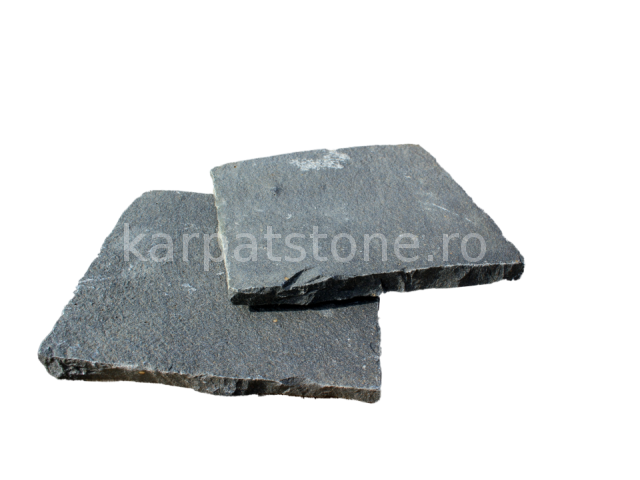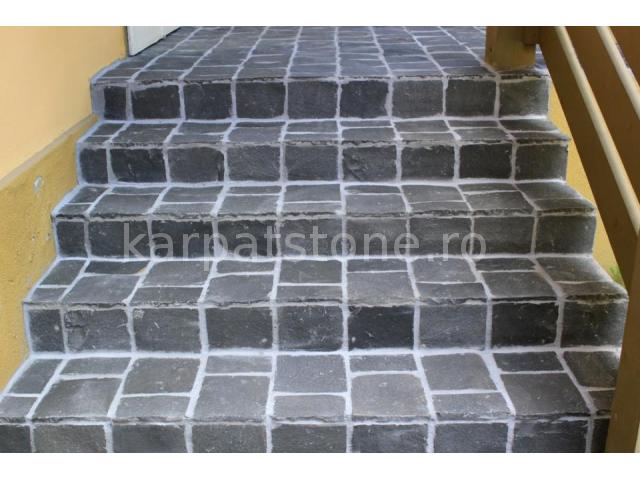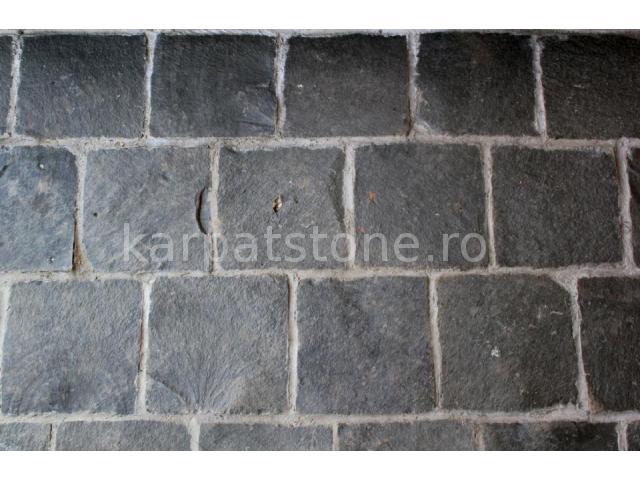The word basalt first appeared in a German etymological dictionary in the 18th century, and it is derived from the Greek, meaning “touchstone”. The basalt is a fine- grained, highly solid magmatic rock, also called as extrusive igneous (volcanic) rock, poor in silica. It is the mixture of iron and magnesium silica, in which olivine (greenish colour), pyroxene and plagioclase minerals can be found. The basalt is a volcanic rock formed by the rapid cooling of runny basaltic lava, making large basalt flows. It is the largest consistent rock of the ocean floor, and it is common on the continents, too. The basalt is usually from dark grey to antracite and black in colour. Its most spectacular occurence is the regular columnar one, in polygonal patterns of 3 to 9 sides, formed by deep vertical fractions under contractional forces of the relatively rapidly cooling lava flows. Just like andesite, the basalt has perfect physical properties, that is why its frost-resistant, abrasion-resistant, non-skidding features make it excellent interior and exterior natural paving stone. The trimmed blocks can be used as cobblestones to pave streets and walkways, the cut-to-size slabs are elegant veneer for balconies, steps, sidewalks, cellar entrances.
Mistic - Bazalt antracit: Due to its regular square shape and rough, non-skidding surface it is recommended as a frost-resistant paver for patios, stairs, walkways, cellar entrances and garages. As its thickness varies from 1 to 2 cm only, it is also usable on places where natural stones are rarely allowed because of lack of enough space.










